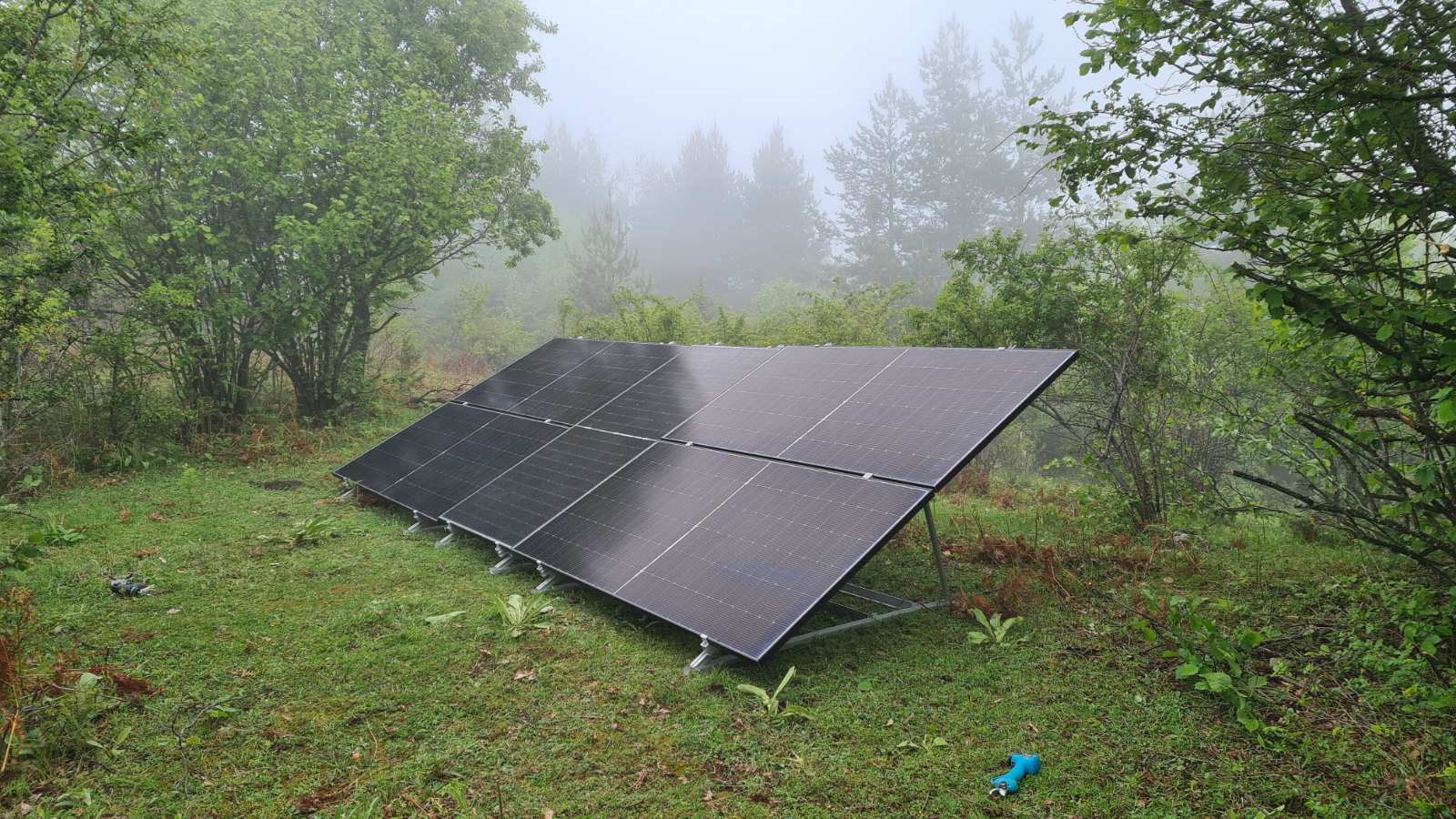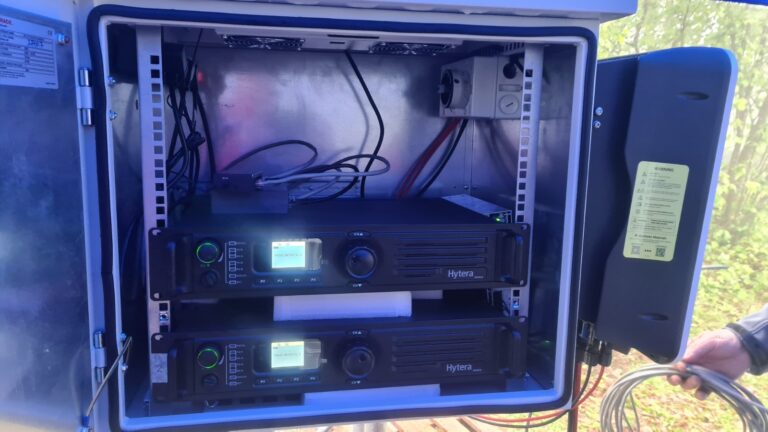
Introduction
Integra-A Ltd., a HYTERA distributor since 1998, delivered and installed a multiсite IP connected DMR Tier II radio system for the needs of an independent film company shooting a survival reality show in the wild in the Rhodope mountains in Southern Bulgaria.
According to the requirements of the customer, Integra-A delivered and installed a fully automated Hytera DMR radio network for a vast territory in the mountain of Rhodope, where there is no electricity and no GSM coverage or internet. The radio system consisted of 4 pcs. DMR repeaters RD-985S, connected via relays on 5 GHz, powered by gasoline generators and solar panels with batteries and automation to switch between the two power sources. There were two separate independent networks with 2 channels each, with two dispatcher base stations located in a high building in Asenovgrad.
The hardest task of all was the transportation and installation of the radio towers – we had most parts custom-made – the towers were installed using winches and secured with wire tensioners.
Structure of the radio network

The installation of the Hytera DMR Tier II network started in the beginning of May 2024. The Integra-A team transported, installed and brought to life the radio system with its autonomous uninterruptible power supply, as well as the antenna systems on 15m radio towers – then the technical team stayed on site and took care of the proper functioning of the radio system for the whole time of the shooting of the reality show, until the end of May. The radio system consisted of 4 pcs. RD985S, as well as 35 hand-helds HP605 и HP685, 2 base
stations HM-785. The radio system was IP connected (using relay stations on 5GHz), there were 2 separate groups, divided into sub-groups. The power supply was from solar panels with batteries and gasoline generators.

The creation of this website was implemented under project No. BG-RRP-3.005-2452-C01 “Solutions in the field of information and communication technologies and cyber security in small and medium-sized enterprises”, financed by the Economic Transformation Program under the National Recovery and Sustainability Plan.